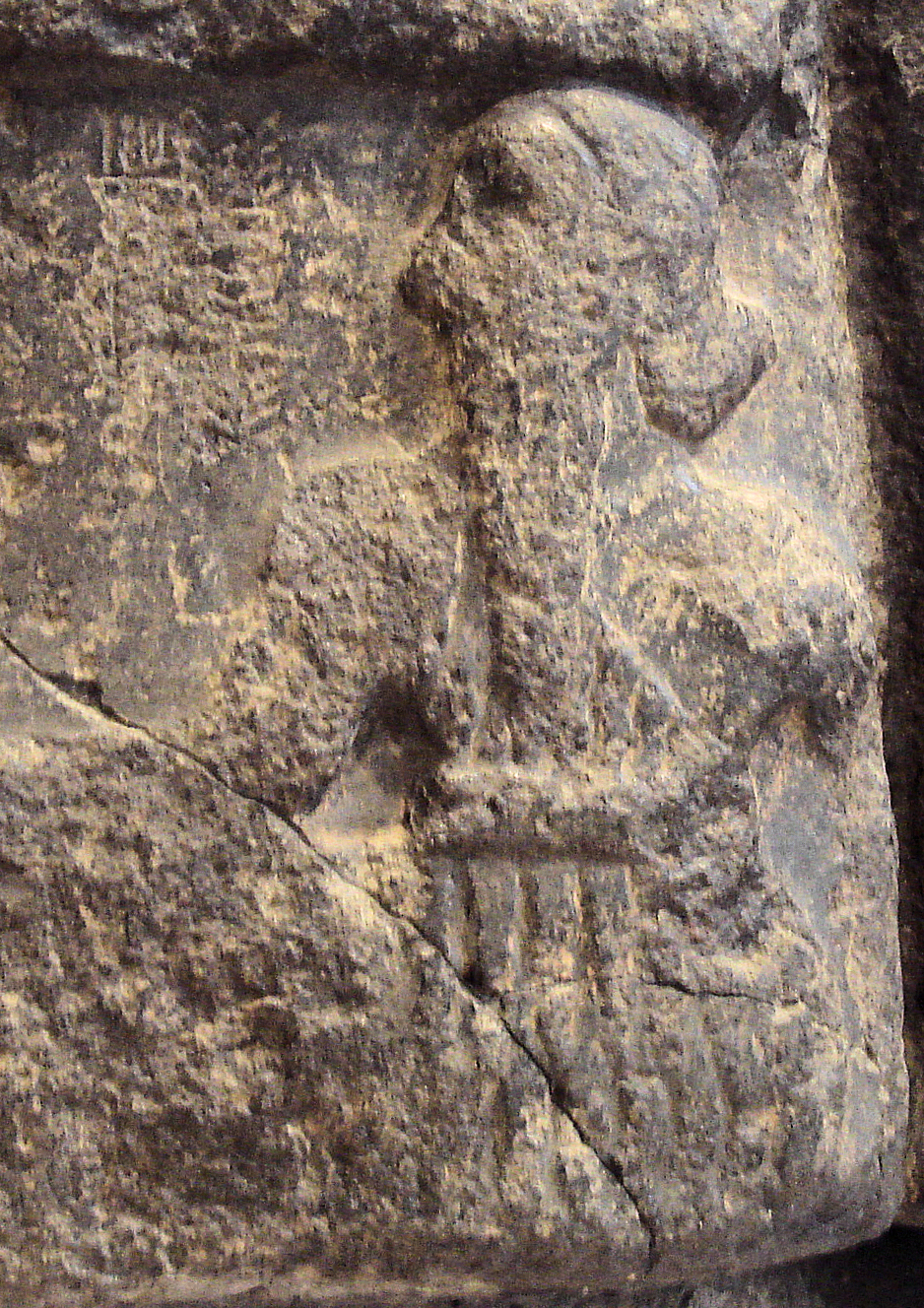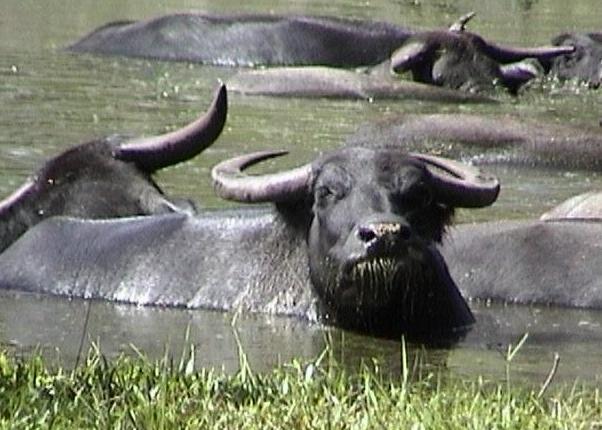|
Meluhha
or ( ) is the Sumerian name of a prominent trading partner of Sumer during the Middle Bronze Age. Its identification remains an open question, but most scholars associate it with the Indus Valley Civilisation. Etymology Asko Parpola identifies Proto-Dravidians with the Harappan Culture and the Meluhhan people mentioned in Sumerian records. In his book ''Deciphering the Indus Script.'' Parpola states that the Brahui people of Pakistan are remnants of the Harappan culture. According to him, the word "Meluhha" derives from the Dravidian words ''mel'' ("elevated") and ''akam'' ("place"). Parpola also relates Meluhha with Balochistan, which he calls the " Proto-Dravidian homeland". He also relates Meluhha with the transient word Mleccha, a Vedic word used to mean "barbarian" and used by the incoming Aryan speaking population for the native Harappan population. Another piece of possible evidence that points to the people of Meluhha as being Proto-Dravidian is the fact that s ... [...More Info...] [...Related Items...] OR: [Wikipedia] [Google] [Baidu] |
Dilmun
Dilmun, or Telmun, ( Sumerian: ,Transliteration: Similar text: later 𒉌𒌇(𒆠), NI.TUKki = dilmunki; ) was an ancient East Semitic–speaking civilization in Eastern Arabia mentioned from the 3rd millennium BC onwards. Based on contextual evidence, it was located in the Persian Gulf, on a trade route between Mesopotamia and the Indus Valley civilisation, close to the sea and to artesian springs. Dilmun encompassed Bahrain, Kuwait,Archived aGhostarchiveand thWayback Machine and eastern Saudi Arabia. The great commercial and trading connections between Mesopotamia and Dilmun were strong and profound to the point where Dilmun was a central figure to the Sumerian creation myth.The Arab world: an illustrated history p.4 Dilmun was described in the saga of Enki and Ninhursag as pre-existing in paradisiacal state, where predators do not kill, pain and diseases are absent, and people do not get old. Dilmun was an important trading centre. At the height of its power, it controll ... [...More Info...] [...Related Items...] OR: [Wikipedia] [Google] [Baidu] |
Magan (civilization)
Magan (also Majan) was an ancient region in what is now modern day Oman and United Arab Emirates. It was referred to in Sumerian cuneiform texts of around 2300 BCE and existed until 550 BCE as a source of copper and diorite for Mesopotamia. As discussed by The Archeology Fund founded by Juris Zarins, "The Sumerian cities of southern Mesopotamia were closely linked to the Persian Gulf. Archaeologists and historians have linked sites in Saudi Arabia, Bahrain, and Qatar to the Sumerian geographical term of Dilmun. Oman, was most likely the Sumerian Magan". Location Modern archaeological and geological evidence places Magan in the area currently encompassed by Oman and the United Arab Emirates. In the past, historians had debated possible locations, including the region of Yemen known as Ma'in, in the south of Upper Egypt, in Nubia or the Sudan, and others as part of today's Iran and Pakistan. Other possible locations discussed for Magan included Bahrain, Qatar, and Makkan, sugge ... [...More Info...] [...Related Items...] OR: [Wikipedia] [Google] [Baidu] |
Balochistan
Balochistan ( ; , ), also spelled as Baluchistan or Baluchestan, is a historical region in West and South Asia, located in the Iranian plateau's far southeast and bordering the Indian Plate and the Arabian Sea coastline. This arid region of desert and mountains is primarily populated by ethnic Baloch people. The Balochistan region is split among three countries: Iran, Afghanistan and Pakistan. Administratively it comprises the Pakistani province of Balochistan, the Iranian province of Sistan and Baluchestan, and the southern areas of Afghanistan, which include Nimruz, Helmand and Kandahar provinces. It borders the Pashtunistan region to the north, Sindh and Punjab to the east, and Persian regions to the west. Its southern coastline, including the Makran Coast, is washed by the Arabian Sea, in particular by its western part, the Gulf of Oman. Etymology The name "Balochistan" is generally believed to derive from the name of the Baloch people. Since the Baloch pe ... [...More Info...] [...Related Items...] OR: [Wikipedia] [Google] [Baidu] |
Akkadian Empire
The Akkadian Empire () was the first known empire, succeeding the long-lived city-states of Sumer. Centered on the city of Akkad (city), Akkad ( or ) and its surrounding region, the empire united Akkadian language, Akkadian and Sumerian language, Sumerian speakers under one rule and exercised significant influence across Mesopotamia, the Levant, and Anatolia, sending military expeditions as far south as Dilmun and Magan (civilization), Magan (modern United Arab Emirates, Saudi Arabia, Bahrain, Qatar and Oman) in the Arabian Peninsula.Mish, Frederick C., Editor in Chief. "Akkad" ''iarchive:webstersninthne000merr, Webster's Ninth New Collegiate Dictionary''. ninth ed. Springfield, MA: Merriam-Webster 1985. ). The Akkadian Empire reached its political peak between the 24th and 22nd centuries BC, following the conquests by its founder Sargon of Akkad. Under Sargon and his successors, the Akkadian language was briefly imposed on neighboring conquered states such as Elam and Guti ... [...More Info...] [...Related Items...] OR: [Wikipedia] [Google] [Baidu] |
Indus Valley Civilization
The Indus Valley Civilisation (IVC), also known as the Indus Civilisation, was a Bronze Age civilisation in the northwestern regions of South Asia, lasting from 3300 BCE to 1300 BCE, and in its mature form from 2600 BCE to 1900 BCE. Together with ancient Egypt and Mesopotamia, it was one of three early civilisations of the Near East and South Asia, and of the three, the most widespread, its sites spanning an area including much of Pakistan, northwestern India and northeast Afghanistan. The civilisation flourished both in the alluvial plain of the Indus River, which flows through the length of Pakistan, and along a system of perennial monsoon-fed rivers that once coursed in the vicinity of the Ghaggar-Hakra, a seasonal river in northwest India and eastern Pakistan. The term ''Harappan'' is sometimes applied to the Indus Civilisation after its type site Harappa, the first to be excavated early in the 20th century in what was then the Punjab ... [...More Info...] [...Related Items...] OR: [Wikipedia] [Google] [Baidu] |
Indus Valley Civilisation
The Indus Valley Civilisation (IVC), also known as the Indus Civilisation, was a Bronze Age civilisation in the Northwestern South Asia, northwestern regions of South Asia, lasting from 3300 Common Era, BCE to 1300 BCE, and in its mature form from 2600 BCE to 1900 BCE. Together with ancient Egypt and Mesopotamia, it was one of three early civilisations of the Near East and South Asia, and of the three, the most widespread, its sites spanning an area including much of Pakistan, Northwest India, northwestern India and northeast Afghanistan. The civilisation flourished both in the alluvial plain of the Indus River, which flows through the length of Pakistan, and along a system of perennial monsoon-fed rivers that once coursed in the vicinity of the Ghaggar-Hakra River, Ghaggar-Hakra, a seasonal river in northwest India and eastern Pakistan. The term ''Harappan'' is sometimes applied to the Indus Civilisation after its type site Harappa, the first to be exc ... [...More Info...] [...Related Items...] OR: [Wikipedia] [Google] [Baidu] |
Proto-Dravidian Language
Proto-Dravidian is the linguistic reconstruction of the common ancestor of the Dravidian languages native to the Indian subcontinent. It is thought to have differentiated into Proto-North Dravidian, Proto-Central Dravidian, and Proto-South Dravidian, although the date of diversification is still debated. History As a proto-language, Proto-Dravidian is not itself attested in historical records. Its modern conception is based solely on Linguistic reconstruction, reconstruction. It is suggested that the language was spoken in the 4th millennium BCE, and started evolving into various branches around 3rd-millennium BCE. The Dravidian people#Origins, origin and territory of the Proto-Dravidian speakers is uncertain, but some suggestions have been made based on the reconstructed Proto-Dravidian vocabulary. The reconstruction has been done on the basis of cognate words present in the different branches (Northern Dravidian languages, Northern, Central Dravidian Languages, Central and Sou ... [...More Info...] [...Related Items...] OR: [Wikipedia] [Google] [Baidu] |
Mleccha
Mleccha () is a Sanskrit term referring to those of an incomprehensible speech, foreigners or invaders deemed distinct and separate from the Vedic tribes. In Vedic Brahmanical discourse, the term is used to refer to foreigners (anāryans) who are considered outside the realm of Vedic dharma. ''Mleccha'' was traditionally applied to denote foreigners or outsiders who did not belong to the Vedic cultural milieu, regardless of their race or skin colour. These individuals were considered outside the Varna system and the ritualistic framework of Vedic society. Historical sources identify various groups as mlecchas, including the Śākas, Huns, Chinese, Greeks, Kambojas, Pahlavas, Bahlikas, Rishikas, and Daradas. Other groups designated as mlecchas include the Barbaras, Kiratas, Paradas, Saka-Greeks, Indo-Greeks, Pulindas, and Scythians. Further identifications include the Kushans, Kinnaras, Tusharas, and Nishadas. The designation further extends to include groups ... [...More Info...] [...Related Items...] OR: [Wikipedia] [Google] [Baidu] |
Sumer
Sumer () is the earliest known civilization, located in the historical region of southern Mesopotamia (now south-central Iraq), emerging during the Chalcolithic and Early Bronze Age, early Bronze Ages between the sixth and fifth millennium BC. Like nearby Elam, it is one of the Cradle of civilization, cradles of civilization, along with ancient Egypt, Egypt, the Indus Valley Civilisation, Indus Valley, the Erligang culture of the Yellow River valley, Caral-Supe civilization, Caral-Supe, and Mesoamerica. Living along the valleys of the Tigris and Euphrates rivers, Sumerian farmers grew an abundance of grain and other crops, a surplus of which enabled them to form urban settlements. The world's earliest known texts come from the Sumerian cities of Uruk and Jemdet Nasr, and date to between , following a period of proto-writing . Name The term "Sumer" () comes from the Akkadian Empire, Akkadian name for the "Sumerians", the ancient non-Semitic languages, Semitic-speaking inhabitan ... [...More Info...] [...Related Items...] OR: [Wikipedia] [Google] [Baidu] |
Indian Buffalo
The water buffalo (''Bubalus bubalis''), also called domestic water buffalo, Asian water buffalo and Asiatic water buffalo, is a large bovid originating in the Indian subcontinent and Southeast Asia. Today, it is also kept in Italy, the Balkans, Australia, North America, South America and some African countries. Two extant types of water buffalo are recognized, based on morphological and behavioural criteria: the river buffalo of the Indian subcontinent and further west to the Balkans, Egypt and Italy; and the swamp buffalo from Assam in the west through Southeast Asia to the Yangtze Valley of China in the east. The wild water buffalo (''Bubalus arnee'') is most probably the ancestor of the domestic water buffalo. Results of a phylogenetic study indicate that the river-type water buffalo probably originated in western India and was domesticated about 6,300 years ago, whereas the swamp-type originated independently from Mainland Southeast Asia and was domesticated about 3,000 to ... [...More Info...] [...Related Items...] OR: [Wikipedia] [Google] [Baidu] |
Middle Bronze Age
The Bronze Age () was a historical period characterised principally by the use of bronze tools and the development of complex urban societies, as well as the adoption of writing in some areas. The Bronze Age is the middle principal period of the three-age system, following the Stone Age and preceding the Iron Age. Conceived as a global era, the Bronze Age follows the Neolithic, with a transition period between the two known as the Chalcolithic. The final decades of the Bronze Age in the Mediterranean basin are often characterised as a period of widespread societal collapse known as the Late Bronze Age collapse (), although its severity and scope are debated among scholars. An ancient civilisation is deemed to be part of the Bronze Age if it either produced bronze by smelting its own copper and alloying it with tin, arsenic, or other metals, or traded other items for bronze from producing areas elsewhere. Bronze Age cultures were the first to develop writing. According to ... [...More Info...] [...Related Items...] OR: [Wikipedia] [Google] [Baidu] |







